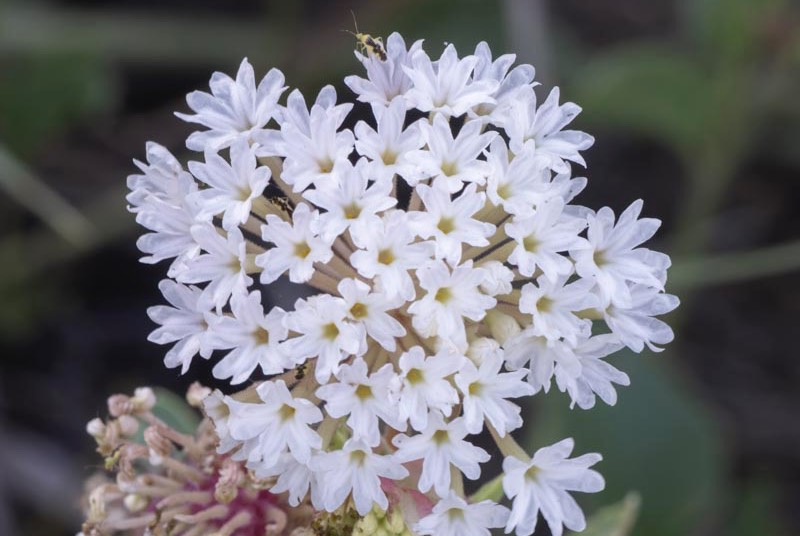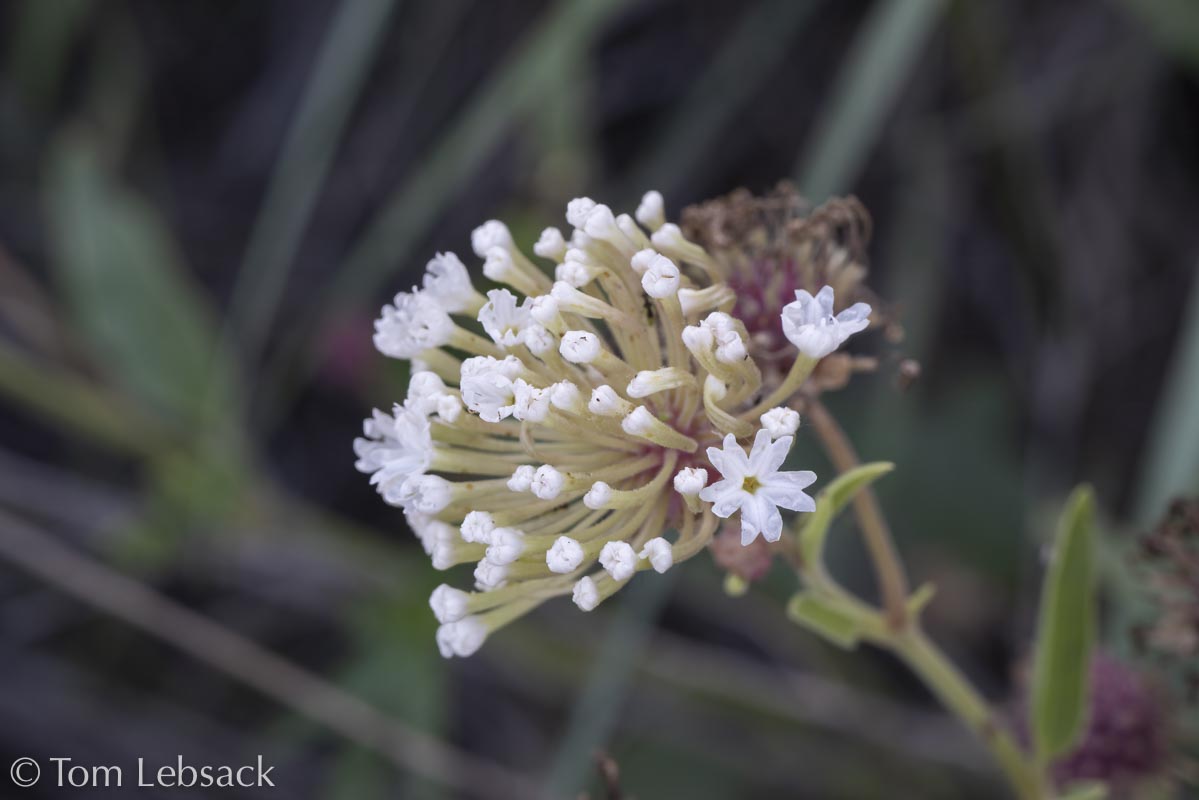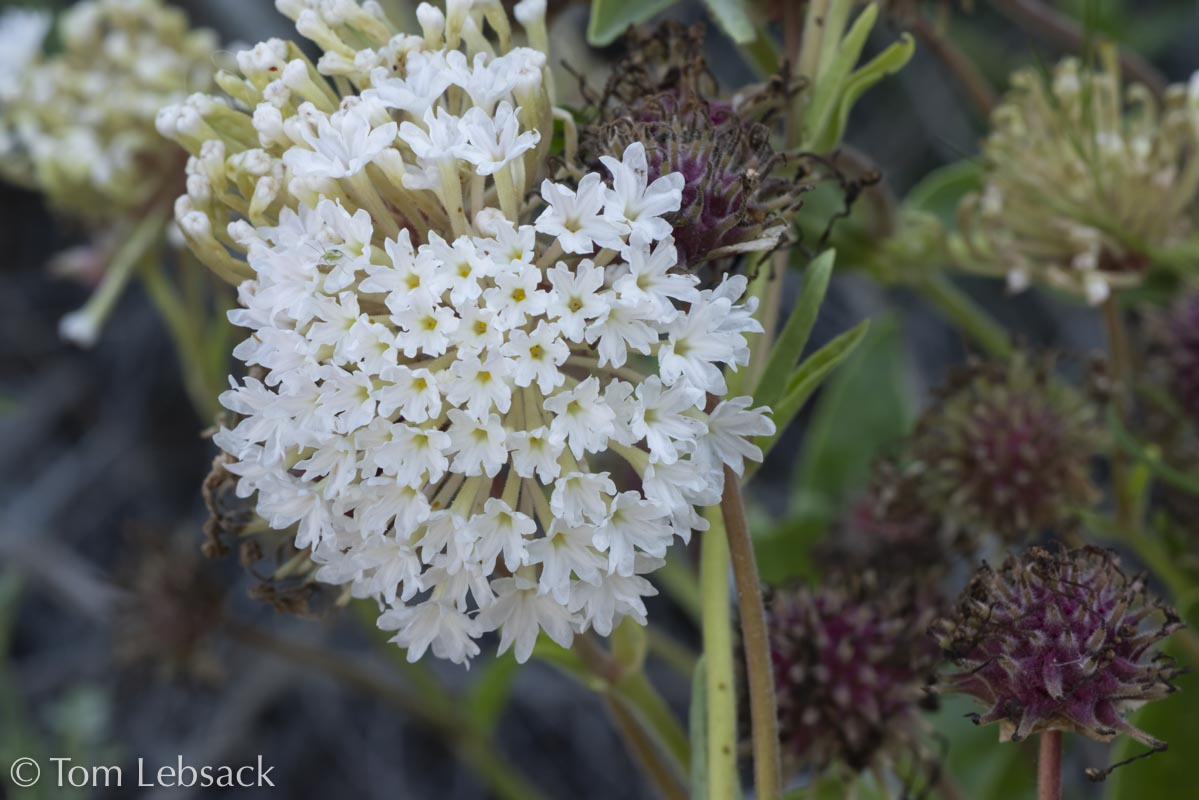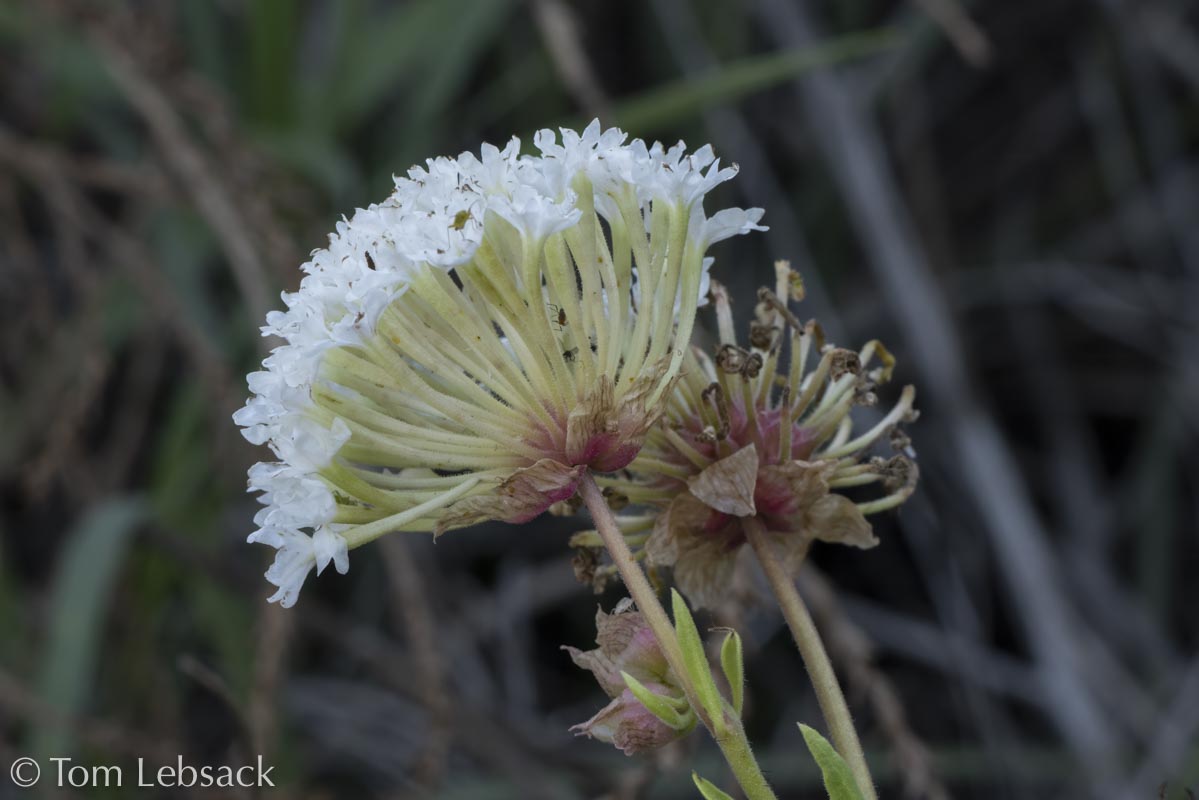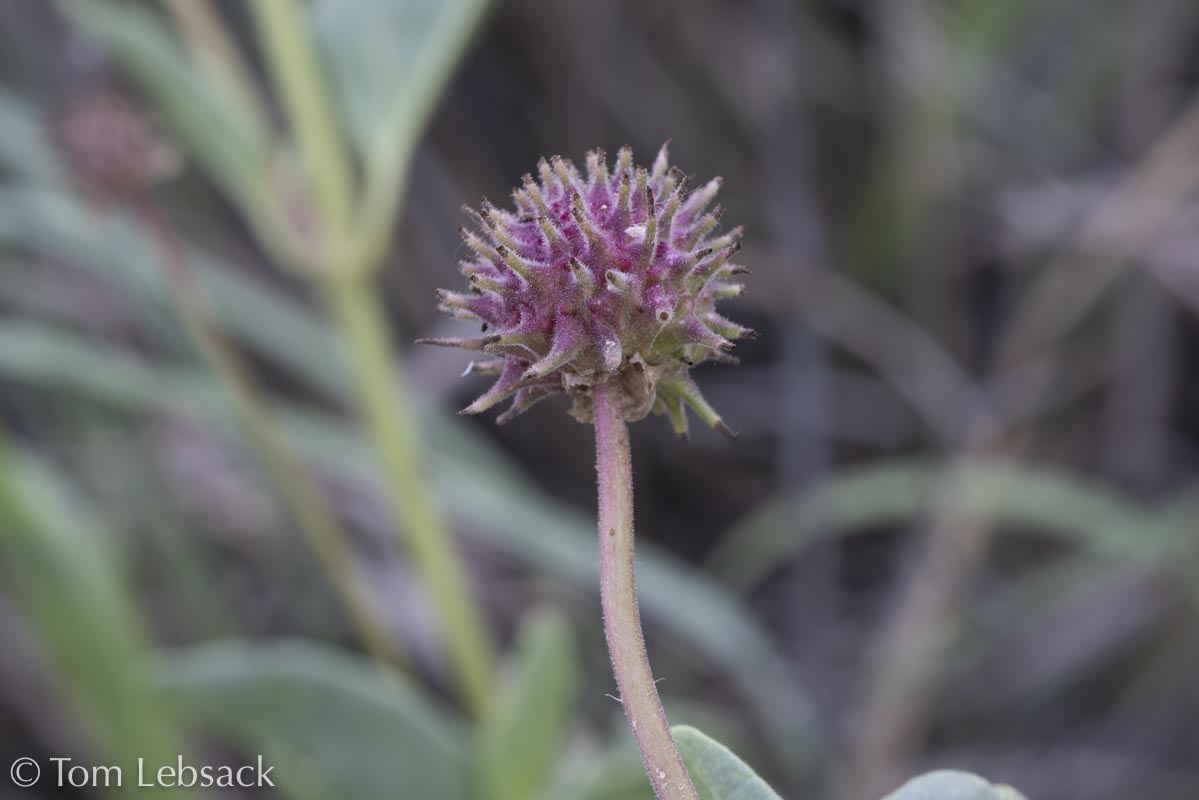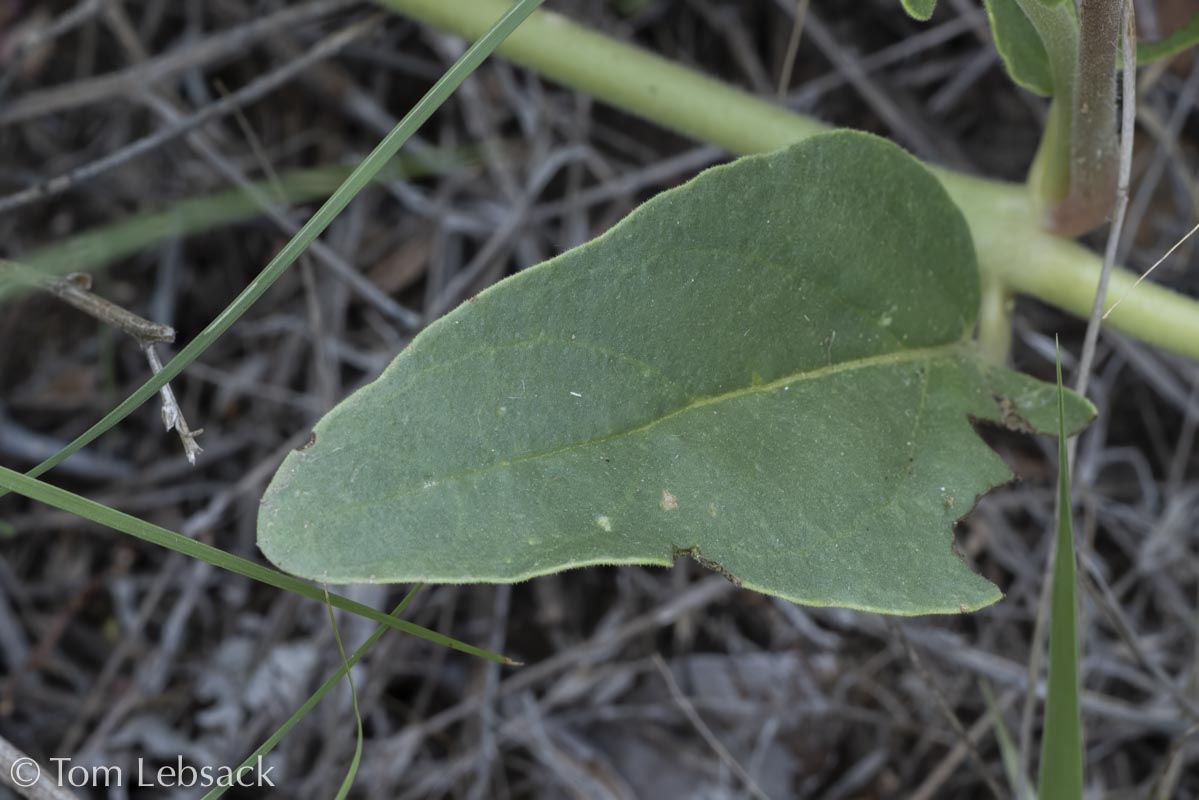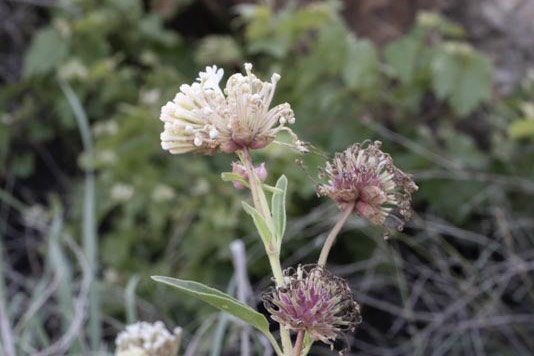Abronia fragrans
(Snowball Sand-verbena)
| Scientific Name | Abronia fragrans | USDA PLANTS Symbol | ABFR2 |
| Common Name | Fragrant Sand Verbena, Snowball Sand Verbena | ITIS Taxonomic Serial No. | 19557 |
| Family | Nyctaginaceae (Four O'clock) | SEINet Reference |
Click Here |
| Description |
Life zones and habitat: Plains and foothills (3500 to 8000 ft.); dry, sandy soils in scrub and grasslands. Plant: Trailing to semi-erect perennial; stems 8 to 40 inches long, moderately branched, greenish or straw-colored and covered in gland-tipped hairs. Leaves: Mostly basal leaves with some pairs of opposite stem leaves; blades are ovate to triangular or lanceolate, 1.2 to 4.7 inches long and 0.8 to 3 inches wide, rounded to pointed tip, and smooth or slightly wavy edges; petioles are 0.2 to 3.1 inches long; glandular-pubescent upper leaf surface, densely pubescent lower surface. Inflorescence: Dense, rounded clusters of 30 to 80 flowers at the ends of nodding peduncles; long, narrow, cream, pale yellow, corolla with 5 reflexed lobes, tube 1/3 to 1-inch long with a pinkish base; each flower with 5 lanceolate-ovate sepals, 1/4-inch or less in length, pink to reddish with glandular hairs; beneath the heads are 5 thin, yellowish-green, becoming tan, linear-lanceolate to ovate bracts, 1/4 to 1 inch long. Bloom Period: May to August. References: "Flora of Colorado" by Jennifer Ackerfield, American Southwest and SEINet. |
BONAP Distribution Map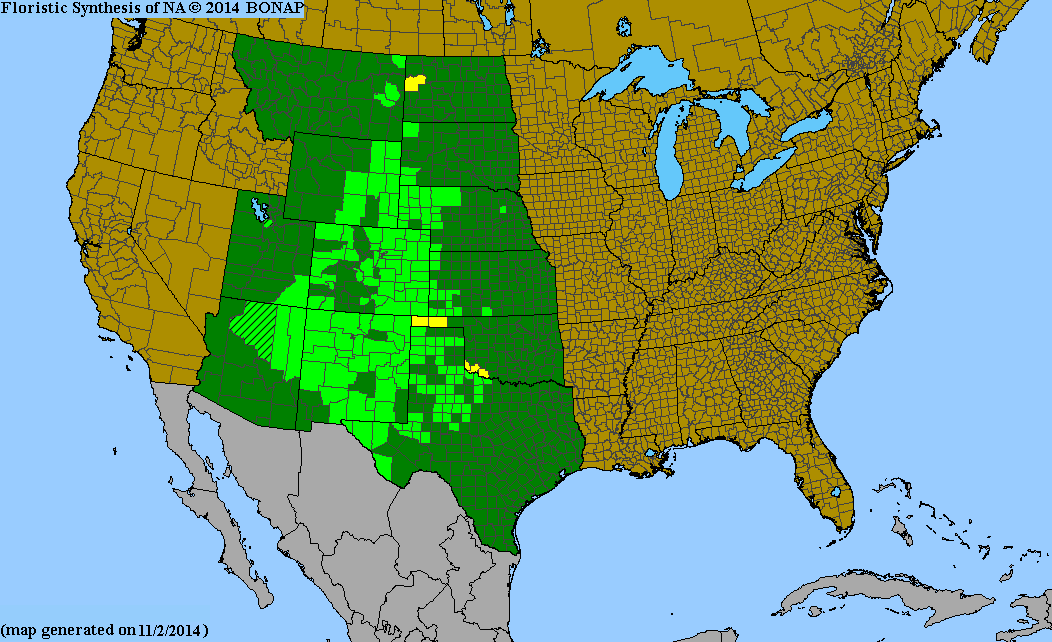 Map Color Key |
Colorado Status: Native |
© Tom Lebsack 2025
Banner photo: Castilleja rhexifolia and a brewing storm over the San Juan Mountains
I try to provide accurate, up-to-date, and relevant information, but cannot guarantee the completeness or accuracy of any information presented on this website. I use authoritative references to insure high standards of accuracy and review and update the information frequently.
